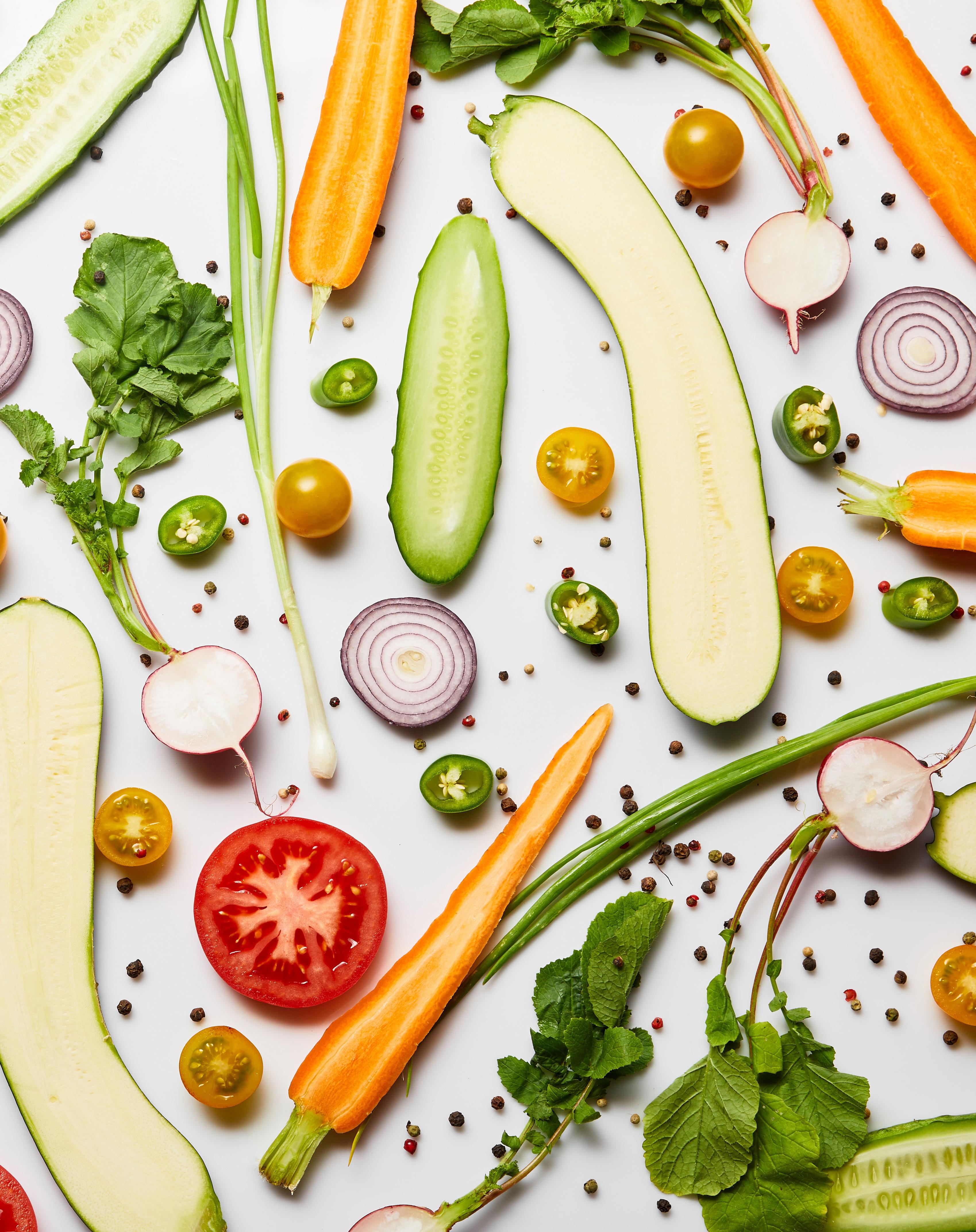










Dear Jetsetter,


Join us on a journey to the Mediterranean with Luxe Jet Airways as we take you to Greece, where food celebrates life, health, and tradition. Immerse yourself in the rich history of ancient Greek culture, where every dish showcases a deep connection to the land and sea. The Greek diet exemplifies balance and longevity, featuring vibrant leafy greens, fragrant herbs, wholesome grains, and heart-healthy olive oil—ingredients that define the Mediterranean way of eating. Discover how Greek cuisine embraces seasonal ingredients, simple preparations, and communal dining, emphasizing sustainability and togetherness.
Organic farming is a cornerstone of Greek food culture, where traditional agricultural practices prioritize soil health, biodiversity, and natural growing methods. From family-run olive groves to small vineyards and local produce markets, Greece’s commitment to organic and locally sourced ingredients preserves the environment while delivering unmatched flavor and nutrition. Throughout this month, Luxe Jet invites you to explore how the time-honored traditions of Greece can inspire a healthier, more sustainable way of life.
In Mediterranean cultures, the afternoon siesta is a time to slow down, rest, and recharge. This month, we embrace the power of midday breaks for better productivity, mental clarity, and overall well-being. Discover the science behind napping, relaxation techniques, and how incorporating rest into your daily routine can enhance your health.
Campus Dining by Thompson Hospitality




Getting caught up in the fast-paced lifestyle and relying on fast food for a quick bite is easy. Still, the traditional Greek lifestyle offers a refreshing reminder that wellness does not have to be complicated. It is rooted in balance and simplicity, savoring wholesome food that nourishes both the body and the soul. Between the busy schedules, late-night study sessions, and everchanging routines, adopting lessons from the Greek lifestyle can be great, fueling energy, sharpening focus, and supporting long-term health.
As new methods for maintaining health and managing weight become popular in the United States, they have contributed to diet culture. Research from EBSCO refers to diet culture as a “societal belief system that prioritizes thinness and appearance over wellbeing.” This can be seen in the variety of wellness trends that emphasize the shape of one’s body and the health of one’s insides. This leads people to adopt very rigid habits and stressful routines. Moreover, changing one’s diet can be challenging for some due to cost barriers, the convenience of fast


This attention to detail creates an enriching dining experience, so it is customary to take time to eat your food, making each mealtime something to enjoy. This slower dining time also allows Greeks to mingle with their loved ones, emphasizing their family-oriented nature.
Adding new habits to your daily routine may seem overwhelming, appearing as something you have to change significantly. However, Greek culture shows us that adopting new habits for a more enriching lifestyle doesn’t have to be hard; it is very easy. If you are looking for new ways to add healthy eating habits to your routine seamlessly, here are a few:
Olive oil is an integral part of Greek culture, dating back to ancient Greece, when it was a sacred commodity. Today, it is used widely in meals, serving as an excellent substitute for butter or margarine. This plant-based cooking oil has been shown to decrease “bad” cholesterol levels while boosting good cholesterol levels and holding anti-inflammatory properties.
According to Cram.com, grains were the easiest food to cultivate in ancient Greek culture and were also used to feed the Greek army during battle. Over time, grains have continued to be an important crop, with whole grains, in particular, providing the body with fiber, vitamins, and minerals.
Many Greek drinks have low sugar or none at all, instead of high sugar. To adopt this habit, try water with lemon and mint to add something special to your drink. If you ever crave a sweet


Adding new spices is probably the least of your worries among the many classes, homework, extracurricular activities, and building up a spice collection. The essentials you may have include salt, pepper, and perhaps an assortment of takeout sauce packets. What if you could elevate your meals, transporting yourself to the sunny shores of Greece with just a dash of flavor?
While we explore the wonders of Greece, it’s time to discover how to use simple, affordable, and delicious herbs that can transform basic dishes into luxurious taverna meals. These delightful herbs are easy to try and even easier to love, as they offer numerous health benefits as well.
Pairing with various Greek cuisines, herbs hold a special place in Greece’s traditional culinary practices. With many plants found on the hillsides of Greece, the abundance of these herbs makes it easy to incorporate them into every meal. Long before they became meal components, ancient Greeks used them for medicinal purposes, discovering ways to create remedies for ailments. They are widely used worldwide, contributing a piece of Greece to various cultural meals. These herbs have become central characters in enhancing natural ingredients. Here are a few herbs you may be familiar with. Learn more about them as a fresh garnish and a sprinkle of magic that ties meals together.





With its earthy, peppery, and bold flavors, oregano is known as one of Greece’s signature herbs. It pairs well with roasted veggies, grilled meats, and even pizza. Although there are few studies on the plant, WebMD notes that it may help reduce high

This fresh herb makes everything feel lighter and brighter. You may have noticed mint being used in the dining hall in the spa waters, but it can also be a great addition to salads, teas, and Greek yogurt. Mint is excellent for aiding digestion, improving brain function, and helping relieve cold symptoms.

Basil is often closely associated with Italy, but is also popular in Greece. It pairs best with tomatoes, olive oil, and cheese, which are common ingredients in Greek cuisine. This herb has great antiinflammatory benefits and can help reduce the risk of heart disease and diabetes.

If you’re looking for a go-to herb for your starches and meats, rosemary is the best choice. Rosemary is a regularly used herb in Greek cuisine, often paired with garlic, and adds a delectable touch to stews and meat. This herb is small but packs a mighty punch, improving eye health, reducing stress, boosting memory, and aiding in digestion,
Often used to top off meals, parsley is more than a garnish; it’s fresh, peppery, and packed with vitamin C. You can use parsley in various dishes, from salads and grain bowls to pasta. Anything that needs a pop of green, parsley is your go-to!








In this current age of technology, our phones wake us up, distract us throughout the day, and tuck us in at night. Notifications are constantly flooding our devices from social media updates to group chat messages; our phones are taking up much of our time. Nonetheless, how often do you turn down the volume on your devices and mind tapping into rest and restoration? How are you taking time for yourself? Setting boundaries with your devices is essential to finding balance and building healthier relationships with technology without completely


Addiction Center.com found that in 2024, there were over 6.8 billion smartphone users worldwide, with 6.3% experiencing a phone addiction. Although the term “addiction” can be jarring, it accurately describes the connection many people have with their devices. In short, a cell phone addiction is an obsessive and compulsive use of a phone. However, our smartphones have become integral to our lives, serving as alarm clocks, wallets, photo albums, music players, cameras, and much more. It is understandable how many become addicted to their phones, as they rely on them heavily. Along with the growth of social media, people are also seeking entertainment from their devices.
Despite not being recognized by the American Psychiatric Association as an official condition, phone addiction is still acknowledged as a behavioral addiction by medical professionals worldwide. Studies have shown that unhealthy phone use can lead to creativity blocks, less sleep, anxiety, reduced cognition, and stress, to name a few.
As technology has become an essential part of society and will continue to evolve with advancements, we must develop healthy technology habits to establish boundaries. To begin, practice having phone-free hours. You can use this time to immerse yourself in a new book, work on class assignments, or attend campus events. Additionally, you can enjoy your meal in the dining hall, taking in the warm atmosphere and delicious flavors.
Moreover, try finding a space for mental clarity away from social media and connecting with yourself. Journaling your thoughts and feelings, taking nature walks through campus, listening to your favorite songs, and discovering new ones are a few ways to disconnect comfortably and
As we navigate this month and semester, consider taking a break from one of your digital habits to establish healthier boundaries with your devices, particularly your smartphone. Keep in mind that you don’t need to disconnect entirely to feel centered. Finding balance in an always-on world involves creating time for moments of quiet, genuine connections, and some mental tranquility. Your mind will appreciate it!

Taking a break should not be reserved for the end of the day, the weekend, or the end of the semester. Taking time to relax at different points can help you realign to finish the rest of the day. In Greece, the midday break is more than a tradition; it’s a part of their lifestyle rooted in balance, well-being, and connection to the natural rhythm of the day. In this exploration of Greece this month, take heed to the different relaxation methods; it may be your key to a seamless semester.
As the afternoon sun climbs to its highest point in the sky, towns in Greece begin to slow down. Shops close, and people take time to rest. Whether it is a short nap, a quiet moment with herbal tea, or simply stepping away to enjoy some time alone, this daily pause is known as a siesta.
The siesta, or “midday nap,” is a cultural cornerstone practiced in Greece and other Mediterranean countries. Dating back to ancient Greece, this midday rest practice aims to rest, recharge, and reconnect in the middle of the day before returning to work or socializing. This rest time is a vital part of the daily rhythm, as Greek culture values balance and views resting as essential to living well.
Napping is said to be beneficial to healthy adults. It provides a short mental break that promotes relaxation, keeps you more alert, increases mood, and improves performance, leading to quicker reaction time. The goal is to aim for power naps between 10 and 30 minutes, as sleeping longer in the middle of the day can make you feel groggy and prevent a good night’s sleep later.
If you can’t make it to your dorm for a midday nap, try taking time away from technology to give your eyes rest from the screen. Opt to sit in a quiet spot on campus or take a walk around campus, soaking up all its beauty. These small moments of stillness provide a daily pause without dozing off, still allowing you to refresh your mind and reset your energy.
In the spirit of Greek living this month, embracing a siesta isn’t about doing less, but instead living more fully. By honoring your body’s needs for rest, you can create space for clarity, calm, and spark creativity. The next time you feel anxious or overwhelmed, remember to channel the essence of a midday pause; it might be just what you need to move forward with purpose. Rest is the foundation of progress; let your siesta be a small act of self-care that speaks volumes.



Luxe Lab LIVE
A Culinary Experience Through the Digital Lense
ELEVATED
Luxe Table Talk
Jet Stream: What’s Hot & What’s Next
Celebrating Community and Culture
The Culture Cabin
Homecoming Fit Challenge
The Luxe Lounge
The Exclusive with SGA and C.A.B

Sky High Wellness
Rest Like the Greeks
Dear Luxe Leader
Making Your Mark CLICK FOR









Before we had composting bins and a plethora of online videos showing us different ways to be eco-friendly, generations worldwide thrived on resourcefulness, stretching ingredients, and repurposing leftovers. From hearty soups made with kitchen odds and ends to creative meals born out of necessity, food waste was unheard of. Generations in Greece or the American South found clever, sustainable ways to make the most of what they had. We can learn from those traditions, incorporating them into our lives, making reducing waste simple, delicious, and meaningful.
Globally, food waste has become an increasingly significant issue, dating back to its early roots in the US during the 1600s, as detailed in a blog by food and beverage consultant Skip Shapiro Enterprises. The problem escalated significantly during the late 1800s and early 1900s due to the Industrial Revolution. Before these advancements, colonial agricultural practices often resulted in food waste because of limited farming technologies. Poor weather and pests easily destroyed crops, reducing the available food supply. However, with the onset of the Industrial Revolution, mass food production surged alongside a new wave of consumerism, leading people to depend less on local farms and more on mass-produced goods. As food became increasingly accessible, many people grew more wasteful, significantly contributing to food waste in urban areas.
In earlier generations, food was primarily about survival, with every ingredient meticulously utilized to create inventive meals. This is evident in 17th and 19th-century America, where enslaved Africans used food scraps to prepare nourishing meals for themselves and their families. Their agricultural expertise allowed them to craft dishes like collard greens, gumbo, and jambalaya, which have since become integral to African American culture. Similarly, in Greece, leftover or unused bread often serves as a base for salads like Greek-style panzanella or is transformed into a savory pie called pita. These practices illustrate that sustainability is not a novel idea but a continually evolving cultural concept.
Along with continuing cultural practices is the idea of having leftovers. While today, it is rebranded as meal prepping, many communities have adopted the concept of creating large portions of meals to eat over a short period. Before the refrigerator was invented and became available in every household, leftovers didn’t exist; rather, early cookbooks would offer directions to pickle, cure, or salt remaining food to prolong the life of ingredients, according to history.com. The ability to keep things cool provided communities with a great advantage, allowing people to easily repurpose extra ingredients into new meals without fear of spoilage. What was a simple way to make the most of meals, also served as a way to reduce food waste, even if it was a small contribution.
As of 2024, PBS still declares food waste a global problem. While things cannot be fixed overnight, we can look to the past and adopt trends from the past to help combat the issue. By revisiting and adapting age-old practices, incorporating them with new ones, we can develop a deeper appreciation for our food and its journey from the farm to our tables.




ب Hummus
ب Cucumber (peeled and sliced)
ب Avocado (sliced)
ب Tortilla
ب Salt & Pepper

ب Olives
ب Pepperoncini
ب Feta cheese
ب Spinach
ب Olive oil
Directions
1. If desired, microwave the tortilla for 15 seconds on each side.
2. Spread the tortilla with hummus.
3. Top with cucumber, avocado, salt & pepper (add as much as you like).
4. Top with olives, pepperoncini, feta cheese, and a handful of spinach.
5. Tightly wrap and slice in half.
6. Enjoy!

Marketing Contacts
Daniela-Gabrielle Smallwood, Vice President of Marketing and Programming
daniela.smallwood@thompsonhospitality.com (571) 446–7430
Stacey Gibson, Director of Retail Marketing stacey.gibson@thompsonhospitality.com (571) 524–8566
Editorial Staff
Gina Godwin, Creative Director
Yolanda Waters, Chief Editor and Writer
Heaven Smallwood, Editor
Tess Mazzucchelli, Graphic Designer